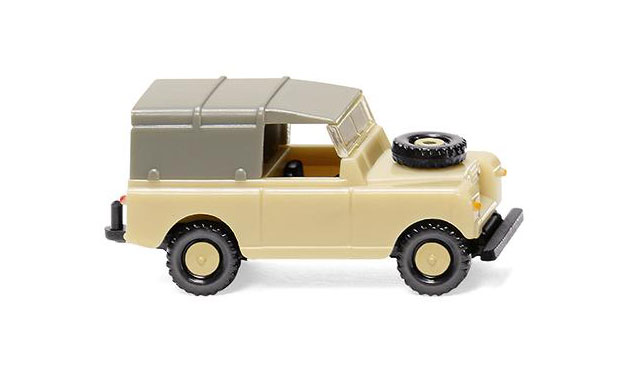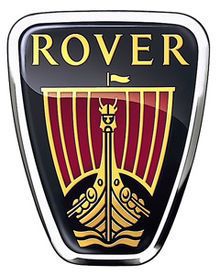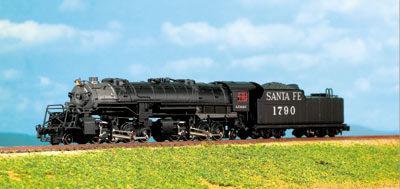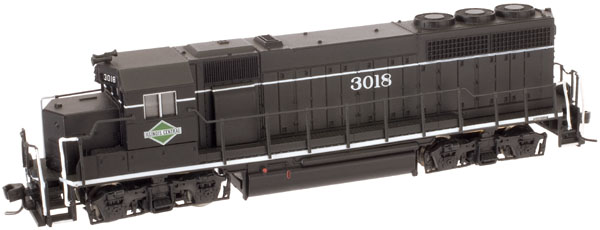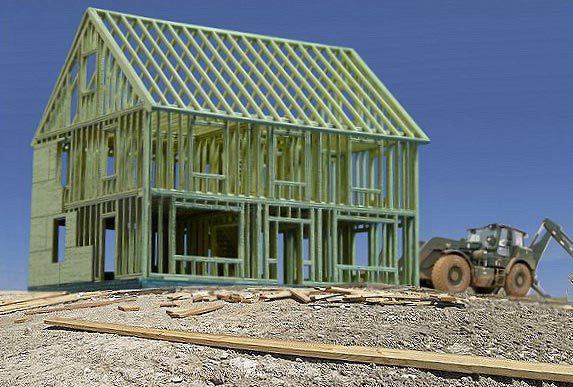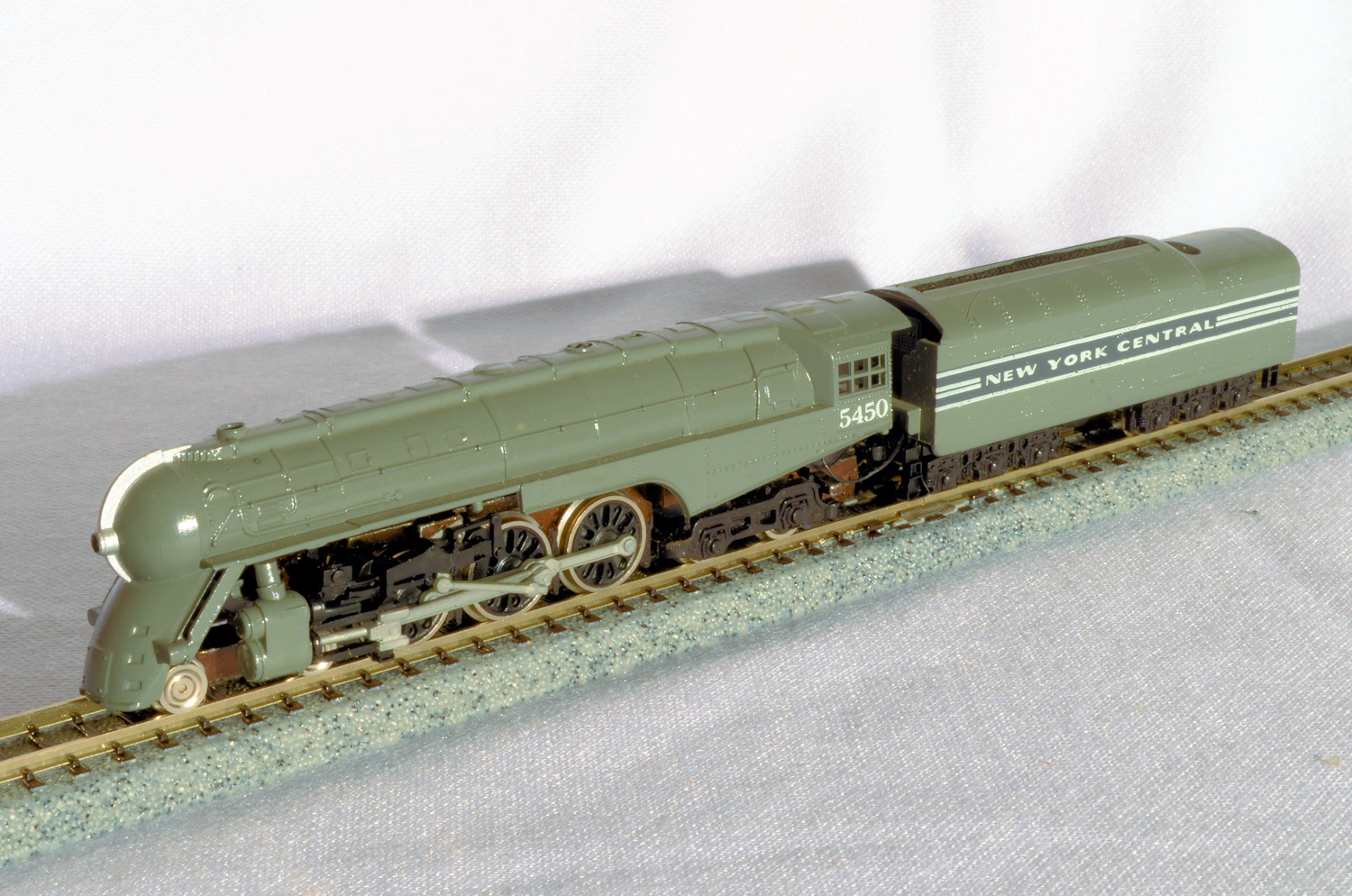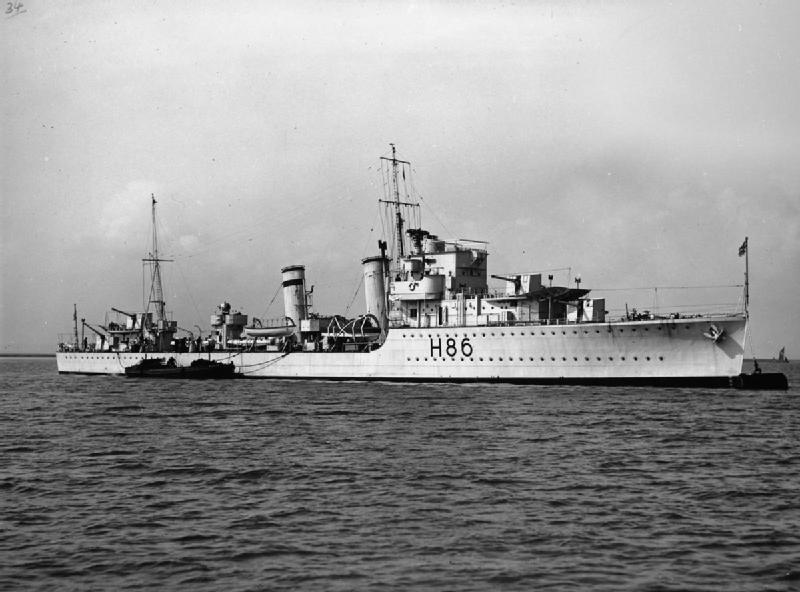Specific Item Information: Body beige, chassis black. Folding top grey Front with silver front headlamps, beige wheels and orange indicators. Tail lights imprinted red. With screen with imprinted beige frame.
Road Name History: The Rover Company Limited was a British car manufacturing company that operated from its base in Solihull in Warwickshire. Its lasting reputation for quality and performance was such that its first postwar model reviewed by Road & Track in 1952 was pronounced finer than any but a Rolls-Royce. Rover also manufactured the Land-Rover from 1948 onwards, which went on to become its most successful and profitable product — with Land Rover eventually becoming a separate brand in its own right.
Rover was sold to Leyland Motors in 1967, who had already acquired Standard-Triumph seven years earlier. Initially, Rover maintained a level of autonomy within the Leyland conglomerate, but by 1978, Leyland - by then British Leyland (BL) - had run into severe financial difficulties and had been nationalized by the British Government. Most of the assets of the former Rover Company were moved into a new subsidiary named Land Rover Ltd whilst the Rover marque itself continued to be used on other BL products which relied largely on Honda engineering. Rover ultimately became the most prolific brand within BL and gave its name to the entire conglomerate in the form of the Rover Group in 1986, of which Land Rover remained a part until the Rover Group was broken up by BMW in 2000.
Today, the Rover marque is dormant, and is currently owned by the Rover Company's de facto successor - Jaguar Land Rover, which still operates out of Rover's Solihull plant.
From Wikipedia
Rover was sold to Leyland Motors in 1967, who had already acquired Standard-Triumph seven years earlier. Initially, Rover maintained a level of autonomy within the Leyland conglomerate, but by 1978, Leyland - by then British Leyland (BL) - had run into severe financial difficulties and had been nationalized by the British Government. Most of the assets of the former Rover Company were moved into a new subsidiary named Land Rover Ltd whilst the Rover marque itself continued to be used on other BL products which relied largely on Honda engineering. Rover ultimately became the most prolific brand within BL and gave its name to the entire conglomerate in the form of the Rover Group in 1986, of which Land Rover remained a part until the Rover Group was broken up by BMW in 2000.
Today, the Rover marque is dormant, and is currently owned by the Rover Company's de facto successor - Jaguar Land Rover, which still operates out of Rover's Solihull plant.
From Wikipedia
Brand/Importer Information: Friedrich Karl Peltzer was born on February 5, 1903 in Berlin. As the son of an officer of the Kaiserliche Marine [Imperial German Navy], he encountered seafaring at a very early age. Therefore it is no great surprise that he was soon interested in model shipbuilding. He impressed friends and family with his astounding dexterity and attention to detail. It was the starting point for an aspiring company, whose foundation admittedly still took almost three decades longer.
Friedrich Peltzer is a publisher who issues the magazine “Das Tier” [The Animal]. However, the year 1932 became the year of vocational change for him. Professional model making kicks off in this year. A short time later, Peltzer sells his magazine and book publishing house to concentrate on model making. It was to become the route to success. The profession evolved from Friedrich Karl Peltzer’s beloved hobby develops - WIKING-Modellbau has taken its initial steps, initial ship models using the company’s preferred scale of 1:1250 arise from the first forms. Friedrich Peltzer states the foundation year himself – the young company waited a while before making an entry in the companies register.
Currently, Wiking is located at SIKU//WIKING Modellwelt Schlittenbacher Str. 56a 58511 Lüdenscheid, Germany. They produce plastic vehicle models in various scales of very high quality.
Friedrich Peltzer is a publisher who issues the magazine “Das Tier” [The Animal]. However, the year 1932 became the year of vocational change for him. Professional model making kicks off in this year. A short time later, Peltzer sells his magazine and book publishing house to concentrate on model making. It was to become the route to success. The profession evolved from Friedrich Karl Peltzer’s beloved hobby develops - WIKING-Modellbau has taken its initial steps, initial ship models using the company’s preferred scale of 1:1250 arise from the first forms. Friedrich Peltzer states the foundation year himself – the young company waited a while before making an entry in the companies register.
Currently, Wiking is located at SIKU//WIKING Modellwelt Schlittenbacher Str. 56a 58511 Lüdenscheid, Germany. They produce plastic vehicle models in various scales of very high quality.
Item created by: nscalestation on 2020-01-19 01:51:03. Last edited by gdm on 2021-07-10 14:16:44
If you see errors or missing data in this entry, please feel free to log in and edit it. Anyone with a Gmail account can log in instantly.
If you see errors or missing data in this entry, please feel free to log in and edit it. Anyone with a Gmail account can log in instantly.


